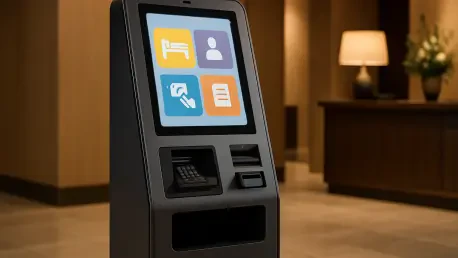I’m thrilled to sit down with Katarina Railko, a seasoned expert in hospitality technology with a wealth of experience in the travel, tourism, and entertainment sectors. With her deep understanding of the industry, particularly in events and conferences, Katarina offers unique insights into how technology is transforming guest experiences. Today, we’re diving into the latest advancements in self-service solutions for hospitality, exploring how these innovations streamline operations, enhance customer satisfaction, and adapt to diverse venues like stadiums, restaurants, and hotels.
How have recent advancements in self-service technology changed the way hospitality venues operate?
These advancements have been a game-changer for the industry. The latest self-service kiosks, for instance, offer features like grab-and-go, pre-order, and scan-and-go options. This flexibility allows venues to cater to different customer needs on the fly, whether it’s a quick snack at a stadium or a pre-ordered meal at a hotel. It’s all about reducing friction in the ordering process and empowering operators to handle high demand without sacrificing quality or speed.
What makes the ability to switch a workstation screen between order-taking and self-service modes so significant for operators?
This kind of adaptability is huge. During peak times, staff can use the workstation for traditional order-taking to maintain a personal touch, while during slower periods, they can flip it to self-service mode to let guests order independently. It optimizes staff workload and ensures that service remains smooth regardless of the rush. For operators, it means maximizing efficiency without needing extra hardware or space.
In what ways do these self-service kiosks help cut down on wait times for customers?
They tackle one of the biggest pain points in hospitality—waiting. By allowing customers to place orders directly, kiosks bypass the traditional queue at the counter. In high-traffic environments like arenas, this can shave off significant time during events when every minute counts. Fans can grab their food or drinks and get back to the game faster, which is a win for both the venue and the guest.
How do these technologies improve the overall guest experience in different settings?
It’s all about convenience and speed. In a restaurant, a compact kiosk can offer grab-and-go options for busy patrons. In a hotel lobby, it might mean pre-ordering breakfast without waiting for staff. The result is a smoother, less stressful interaction that leaves guests feeling valued. When you reduce hassle, you’re more likely to create a positive, memorable impression that keeps people coming back.
Can you explain how streamlined order processing through kiosks impacts day-to-day operations for businesses?
Streamlined processing cuts down on manual errors like misheard orders or incorrect items, which are common during busy shifts. It also speeds up the transaction flow, so staff can focus on other tasks like food prep or customer service. For a restaurant or hotel, this means fewer hiccups in service and a more consistent operation, even on the busiest days.
How does the design of modern self-service kiosks adapt to the unique needs of different hospitality environments?
The design is incredibly versatile. In a stadium, kiosks are built to handle high-volume, rapid transactions with minimal staff oversight. In a hotel lobby, they might be more compact and user-friendly for a diverse range of guests. Smaller countertop models are perfect for tight spaces, ensuring that even boutique venues can offer self-service without cluttering their layout. It’s about fitting the tech to the vibe and needs of the space.
What role does customization play in enhancing a brand’s identity through these self-service solutions?
Customization is key to standing out. With dual-purpose workstations, operators can add branded touchpoints—think logos, colors, or tailored menus on the screen. This reinforces the brand every time a guest interacts with the kiosk. It’s a subtle but powerful way to build recognition and make the experience feel unique, whether you’re at a local diner or a luxury resort.
How do these advancements in self-service technology contribute to building customer loyalty?
Loyalty comes from delivering consistently great experiences. When service is fast, easy, and seamless—thanks to self-service options—guests are more likely to return. These kiosks also open doors to personalization, like remembering past orders or offering tailored promotions, which makes customers feel seen. It’s those little touches, combined with efficiency, that turn casual visitors into loyal fans.
What is your forecast for the future of self-service technology in the hospitality industry?
I see self-service tech becoming even more integrated into every aspect of hospitality. We’re likely to witness advancements in AI that make kiosks smarter—think predictive ordering or deeper personalization. There’s also potential for broader adoption across smaller venues as costs come down and scalability improves. Ultimately, the focus will remain on balancing tech with the human touch, ensuring guests feel connected even in a self-service world.









